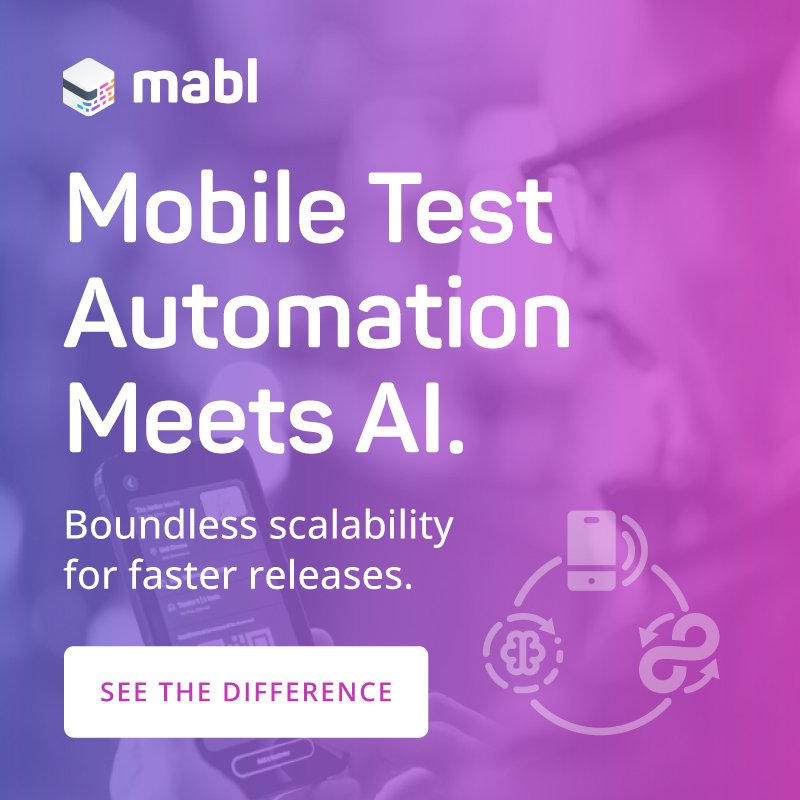Why developers benefit when implementing a cloud backend into apps
Wednesday, October 26, 2016

|
Richard Harris |
The popularity of enterprise mobile app development has boomed across many industries as businesses have identified mobility as a key agent in their digital transformation efforts. As mobile application demand has risen, app developers are exploring new ways to simplify mobile app development and management. Enter cloud backend.
We recently sat down with Ashruti Singh, Product Marketing Manager for SAP HANA Cloud Platform at SAP, to discuss how app developers stand to benefit from implementing mobile cloud back ends into their programs and where she sees the future of mobile app development heading in 2017.
Overall, PaaS solutions can help propel business transformation initiatives (including mobility strategies) by democratizing mobile development across several lines of business and by providing a centralized cloud platform for developers across the organization.
Mobile-Backend-as-a-Service (MBaaS) complements PaaS and many advanced PaaS solutions – SAP HANA Cloud Platform for example – incorporate MBaaS functions, including data synchronization, user management, location-based services, push notifications and cloud data storage.
For example, processing a new order requires field sales representatives to access enterprise applications for CRM and ERP. Accessing these applications on a mobile device can be a time-consuming process that requires switching between applications with multiple login credentials and navigating menu options. Since workflows typically reflect how sales representatives would access applications on a desktop computer or laptop, customer orders can be delayed if sales representatives way until they have access to their laptops.
Integrating mobile apps with a company’s CRM and ERP platforms gives sales representatives a single, streamlined user interface and enables accelerated order processing. Mobile apps provide sales representatives with seamless, real-time access from their devices to the enterprise applications they need to get their work done. Additionally, workflow is secure and compliant regardless of which device, network or location sales reps use at any given time.
The server-side of an enterprise mobility infrastructure provides necessary functionalities to use mobile applications in an enterprise setting while doing so in a secure and efficient way. This can include application services that support recurring use cases such as document sharing, core mobile services that are used commonly across all applications and push notification services that provide real-time access to various backend systems and databases.
The client side is used to build the mobile apps that run on mobile devices, accounting for user interfaces and corresponding business logic.
Mobile app developers agree that one of the most complex requirements in deploying mobile applications in enterprise settings is integrating with backend systems and databases. While highly customized mobile applications can tightly integrate with enterprise systems, pre-packaged applications often require third-party software (development platforms) or custom installations to make them work.
Since their emergence, MBaaS solutions have been gained popularity as a solution to this problem. MBaaS help reduce the complexities that are typically associated with the creation, setup and operation of a backend for mobile applications. Most mobile applications need a similar feature set for their backend, and MBaaS solutions offer a consistent and unified way to access these different services via their software development kits (SDKs).
For starters, enterprises achieve tangible improvements in code quality and a significant increase in on-time delivery performance with cloud backend. They are also able to reduce deployment time from hours to minutes, enabling faster innovation and reduce product development cycles while lowering cost of development.
Additionally, cloud backend makes cloud apps easier to scale on demand and provides users with unique ways of gathering data and making better, more informed decisions.
However, cloud backend’s value is not solely related to the efficiency and cost gains offered by having hardware and software in the cloud versus ownership on-premise. Its value proposition extends further by offering users the ability to quickly launch new applications while being able to then dynamically change aspects of the service as the business demands.
Overall, the cloud effectively enables the developer to focus on its core business – the application – instead of wasting valuable time on back-office processes. As a result, cloud computing can foster innovation and creativity by shifting developer attention to the end-user application while removing many of the cost, management and infrastructure hurdles.
BUILD enables you to address usability and adoption issues at early phases of discover and design, without investing more resources in design. It empowers non-designer and non-technical users to actively take part in the discovery and design phases. They can learn the fundamentals of user-centered design easily and start building applications without writing a single line of code. Most importantly, it makes the user-centered design process accessible to all.
Early in the discovery and design phases teams can quickly gather feedback on multiple ideas using BUILD’s low fidelity prototyping feature enabling an efficient way of prioritizing and validating a large number of initial ideas quickly and cheaply. Once a design has been validated, BUILD can be used to develop high fidelity prototypes using a visual drag-and-drop environment and a gallery of design patterns can be leveraged to accelerate the process.

Ashruti Singh
The product and tool set under UXaaS addresses the four phases of application development with strong products and capabilities to ensure the right app is developed with the right experience at the right cost. All these are developed around consistent UX design. Unlike standalone design tools they offer the advantage of direct access to critical development and service functions of the cloud platform. It ensures that we move from one phase to the next, we do not lose the user requirements in translation or the code in transition.
Moving forward, we will see technological and business trends that will help meet the growing app demand by simplifying the app design, development and management processes. Overall, there are three emerging trends. More lines of business will become involved in app development, app development will become more accessible to citizen and non-IT developers to expand app design to a larger audience, and rapid app development tools and techniques will grow.
Read more: https://hcp.sap.com/index.html
We recently sat down with Ashruti Singh, Product Marketing Manager for SAP HANA Cloud Platform at SAP, to discuss how app developers stand to benefit from implementing mobile cloud back ends into their programs and where she sees the future of mobile app development heading in 2017.
ADM: What is cloud backend?
Singh: I’ll start by expanding on a few acronyms and connecting the dots between several key technology terms. Essentially, Platform-as-a-Service(PaaS) is an application development platform in the cloud that can be used for extending and customizing existing applications and developing new applications. Market leading PaaS offers a robust library of cloud-based services to help accelerate your application development cycles and has emerged as a powerful method for streamlining the creation, setup and operation of a backend for any application.Overall, PaaS solutions can help propel business transformation initiatives (including mobility strategies) by democratizing mobile development across several lines of business and by providing a centralized cloud platform for developers across the organization.
Mobile-Backend-as-a-Service (MBaaS) complements PaaS and many advanced PaaS solutions – SAP HANA Cloud Platform for example – incorporate MBaaS functions, including data synchronization, user management, location-based services, push notifications and cloud data storage.
ADM: Can you tell us the most obvious use for cloud backends?
Singh: It’s challenging to deliver effective mobility solutions without integrating it simply with on-premise systems. Cloud backend plays a central role in facilitating this as mobile app design should center on users’ specific tasks or workflows.For example, processing a new order requires field sales representatives to access enterprise applications for CRM and ERP. Accessing these applications on a mobile device can be a time-consuming process that requires switching between applications with multiple login credentials and navigating menu options. Since workflows typically reflect how sales representatives would access applications on a desktop computer or laptop, customer orders can be delayed if sales representatives way until they have access to their laptops.
Integrating mobile apps with a company’s CRM and ERP platforms gives sales representatives a single, streamlined user interface and enables accelerated order processing. Mobile apps provide sales representatives with seamless, real-time access from their devices to the enterprise applications they need to get their work done. Additionally, workflow is secure and compliant regardless of which device, network or location sales reps use at any given time.
ADM: How does mobile cloud backend compare to traditional server-based solutions?
Singh: From an architectural point of view, a mobile application infrastructure consists of a server and the client side. The cloud backend or server-side manages enterprise security and is responsible for backend integration, communications and scalability, among other things.The server-side of an enterprise mobility infrastructure provides necessary functionalities to use mobile applications in an enterprise setting while doing so in a secure and efficient way. This can include application services that support recurring use cases such as document sharing, core mobile services that are used commonly across all applications and push notification services that provide real-time access to various backend systems and databases.
The client side is used to build the mobile apps that run on mobile devices, accounting for user interfaces and corresponding business logic.
Mobile app developers agree that one of the most complex requirements in deploying mobile applications in enterprise settings is integrating with backend systems and databases. While highly customized mobile applications can tightly integrate with enterprise systems, pre-packaged applications often require third-party software (development platforms) or custom installations to make them work.
Since their emergence, MBaaS solutions have been gained popularity as a solution to this problem. MBaaS help reduce the complexities that are typically associated with the creation, setup and operation of a backend for mobile applications. Most mobile applications need a similar feature set for their backend, and MBaaS solutions offer a consistent and unified way to access these different services via their software development kits (SDKs).
ADM: What are the overall benefits of cloud backend systems?
Singh: Organizations pursuing digital transformation initiatives are finding several use cases for cloud technology and mobile computing,specifically with improving business agility.For starters, enterprises achieve tangible improvements in code quality and a significant increase in on-time delivery performance with cloud backend. They are also able to reduce deployment time from hours to minutes, enabling faster innovation and reduce product development cycles while lowering cost of development.
Additionally, cloud backend makes cloud apps easier to scale on demand and provides users with unique ways of gathering data and making better, more informed decisions.
However, cloud backend’s value is not solely related to the efficiency and cost gains offered by having hardware and software in the cloud versus ownership on-premise. Its value proposition extends further by offering users the ability to quickly launch new applications while being able to then dynamically change aspects of the service as the business demands.
Overall, the cloud effectively enables the developer to focus on its core business – the application – instead of wasting valuable time on back-office processes. As a result, cloud computing can foster innovation and creativity by shifting developer attention to the end-user application while removing many of the cost, management and infrastructure hurdles.
ADM: How does a mobile cloud backend foster design flexibility?
Singh: A great user experience is the key to driving user adoption of enterprise apps, but there is paucity of designers in enterprises and, in many cases, hiring designers is not economically feasible. As an alternative, you can leverage the power of technology to help scale design, resulting in delightful end-user applications. One such service that improves the design is SAP HANA Cloud Platform, BUILD service, a tool that can scale the design and user research process as well as enable non-designers to become “designers.”BUILD enables you to address usability and adoption issues at early phases of discover and design, without investing more resources in design. It empowers non-designer and non-technical users to actively take part in the discovery and design phases. They can learn the fundamentals of user-centered design easily and start building applications without writing a single line of code. Most importantly, it makes the user-centered design process accessible to all.
Early in the discovery and design phases teams can quickly gather feedback on multiple ideas using BUILD’s low fidelity prototyping feature enabling an efficient way of prioritizing and validating a large number of initial ideas quickly and cheaply. Once a design has been validated, BUILD can be used to develop high fidelity prototypes using a visual drag-and-drop environment and a gallery of design patterns can be leveraged to accelerate the process.

Ashruti Singh
ADM: In what ways does a mobile cloud backend enable collaboration in large development teams?
Singh: It is critical to move efficiently through the discovery, design, development and deployment phases. User-Experience-as-a-Service (UXaaS)provides an integrated offering to help address the key considerations associated with each phase of the innovation lifecycle. It brings together tools and content in an integrated offering and coordinates all four phases of development, all while connecting designers, analysts, developers, administrators and end users into one process.The product and tool set under UXaaS addresses the four phases of application development with strong products and capabilities to ensure the right app is developed with the right experience at the right cost. All these are developed around consistent UX design. Unlike standalone design tools they offer the advantage of direct access to critical development and service functions of the cloud platform. It ensures that we move from one phase to the next, we do not lose the user requirements in translation or the code in transition.
ADM: What are the financial considerations that go into making a decision on whether or not to develop mobile apps on the cloud?
Singh: We can split the investment of mobile app development in five large categories – development, infrastructure, design, app admin and testing. In recent research sponsored by SAP, we found that 24 percent of application development budget goes in infrastructure and 9 percent in app admin. IT spend can be fundamentally changed using a cloud-based application development platform, which reduces IT infrastructure complexity and simplifies the deployment, maintenance and upgrade of the application portfolio.ADM: Where do you seethe future of mobile app development heading into 2017?
Singh: There is no denying the fact that there is growing demand for mobile apps in enterprises across several industries. In fact, mobility is driving digital transformation initiatives at many organizations, as there area number of processes and applications that can benefit from mobility. We will see technological and business trends that will help meet the growing app demand by simplifying the design, development and management of apps.Moving forward, we will see technological and business trends that will help meet the growing app demand by simplifying the app design, development and management processes. Overall, there are three emerging trends. More lines of business will become involved in app development, app development will become more accessible to citizen and non-IT developers to expand app design to a larger audience, and rapid app development tools and techniques will grow.
Read more: https://hcp.sap.com/index.html

Become a subscriber of App Developer Magazine for just $5.99 a month and take advantage of all these perks.
MEMBERS GET ACCESS TO
- - Exclusive content from leaders in the industry
- - Q&A articles from industry leaders
- - Tips and tricks from the most successful developers weekly
- - Monthly issues, including all 90+ back-issues since 2012
- - Event discounts and early-bird signups
- - Gain insight from top achievers in the app store
- - Learn what tools to use, what SDK's to use, and more
Subscribe here














